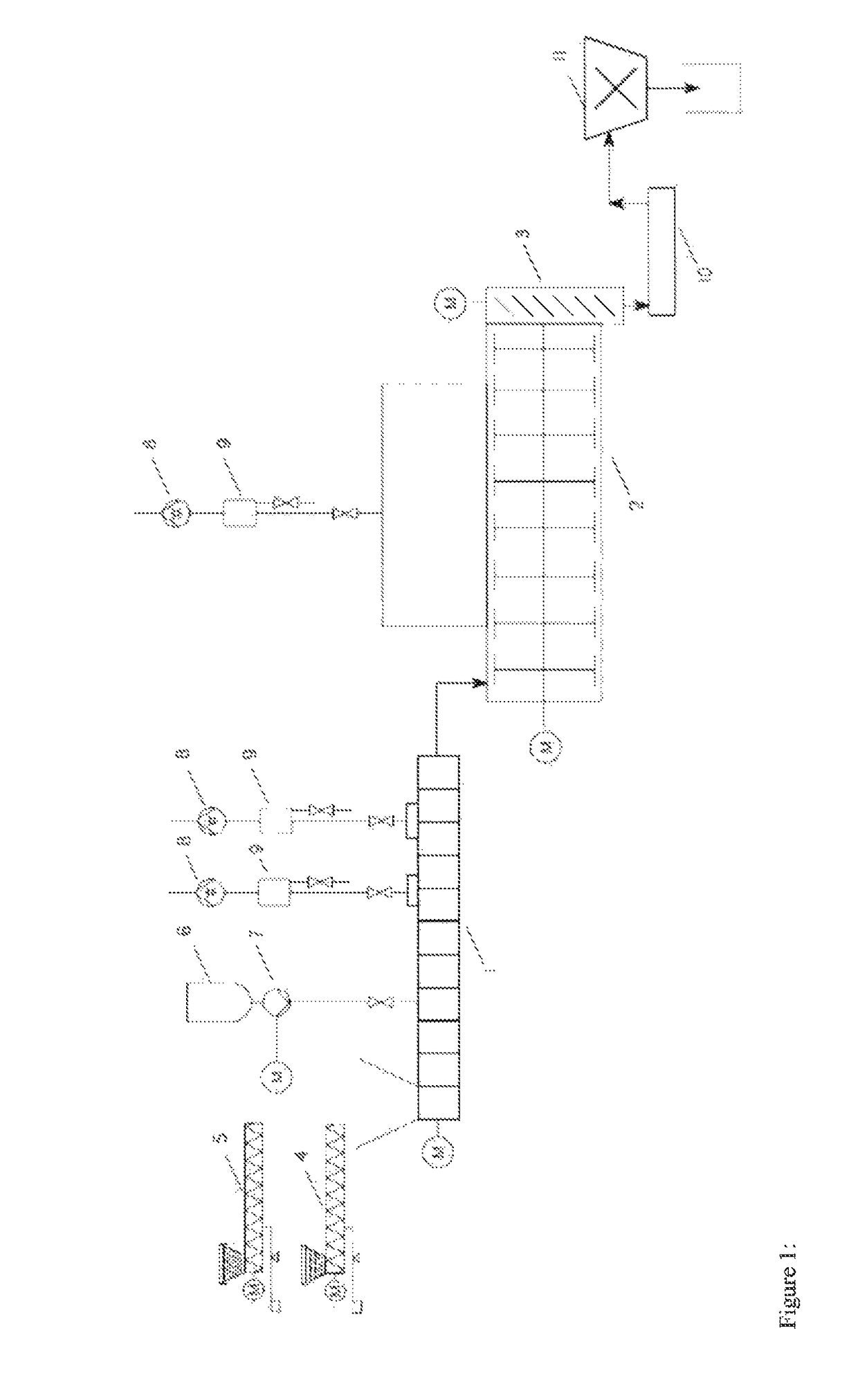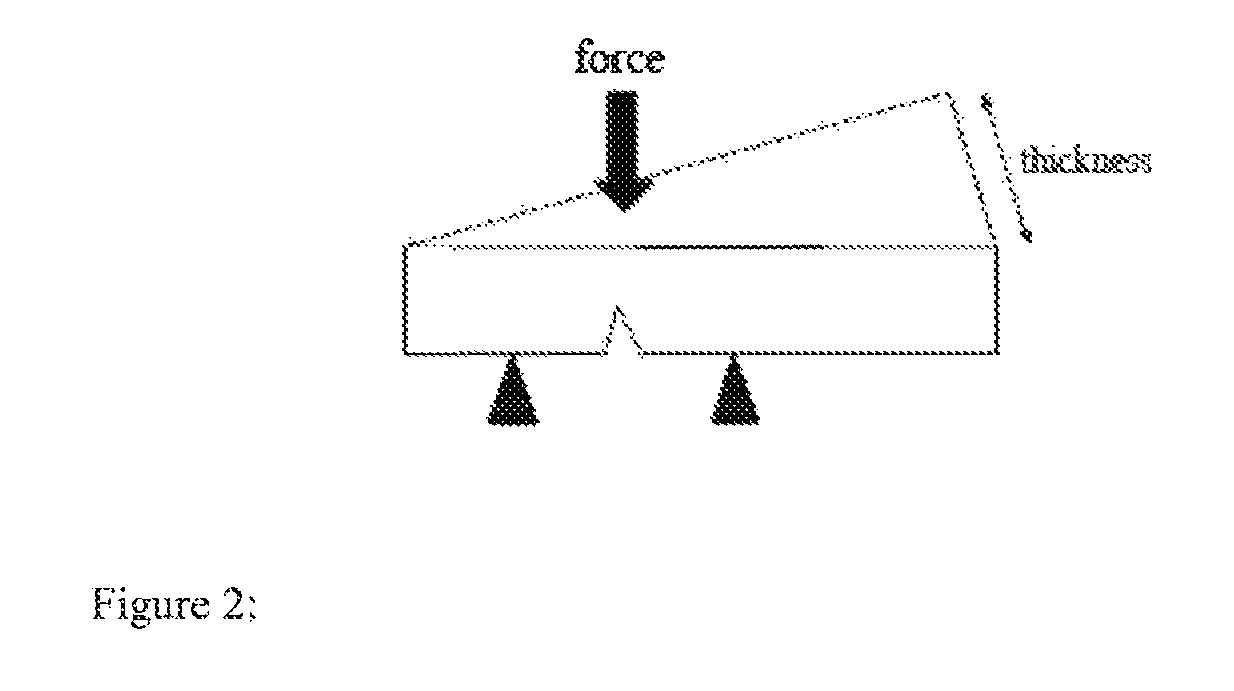Polysiloxane-polycarbonate block cocondensates with improved rheological properties
a polysiloxane and cocondensate technology, applied in the field of polysiloxanepolycarbonate block cocondensates with improved rheological properties, can solve the problems of high plant size, poor rheological performance, and inability to economically viable prepare specific block cocondensates in these plants, so as to improve rheological properties, improve processability, and improve the effect of rheological properties
- Summary
- Abstract
- Description
- Claims
- Application Information
AI Technical Summary
Benefits of technology
Problems solved by technology
Method used
Image
Examples
examples
[0167]The invention is described in detail hereinafter by working examples, the determination methods described here being employed for all corresponding parameters in the present invention, in the absence of any descriptions to the contrary.
[0168]Determination of Melt Volume Flow Rate (MVR):
[0169]The melt volume flow rate (MVR) is determined to ISO 1133 (at 300° C.; 1.2 kg), unless any other conditions have been described.
[0170]Determination of Solution Viscosity (eta rel):
[0171]The relative solution viscosity (ηrel; also referred to as eta rel) was determined in dichloromethane at a concentration of 5 g / l at 25° C. with an Ubbelohde viscometer.
[0172]Light Microscopy (To Investigate the Incorporation of the Siloxane Component):
[0173]The incorporation characteristics of the siloxane component are checked via light microscopy. The presence of large amounts (in the micrometer range or greater) of silicone oil is a pointer to physical incorporation of the silicone component. No block c...
example 3
Preparation of Polysiloxane-Polycarbonate Block Cocondensate Manufactured by an Interphase Process (Comparative Example)
[0189]25 liters of methylene chloride were added to a solution, rendered inert with nitrogen, of 2185 g (9.57 mol) of bisphenol A and 1687 g (42.16 mol) of sodium hydroxide in 25 liters of water, 115 g (about 5% by weight related to the amount of bisphenol A) of siloxane component (see above) was added. 1896 g (19.17 mol) of phosgene were introduced at a pH of from 12.5 to 13.5 and at 20° C. 30% sodium hydroxide solution was added during the phosgenation in order to prevent the pH from falling below 12.5. When the phosgenation was complete, and after flushing with nitrogen, 65.4 g (0.43 mol) of 4-tert-butylphenol (technical grade from Sigma-Aldrich, USA) dissolved in 2 liter of dichloromethane were added. Stirring was carried out for 10 minutes, and 11 g (0.1 mol) of N-ethylpiperidine dissolved in 0.5 liter dichloromethane were added, and stirring was continued for...
PUM
| Property | Measurement | Unit |
|---|---|---|
| diameter | aaaaa | aaaaa |
| diameter | aaaaa | aaaaa |
| diameter | aaaaa | aaaaa |
Abstract
Description
Claims
Application Information
 Login to View More
Login to View More - R&D
- Intellectual Property
- Life Sciences
- Materials
- Tech Scout
- Unparalleled Data Quality
- Higher Quality Content
- 60% Fewer Hallucinations
Browse by: Latest US Patents, China's latest patents, Technical Efficacy Thesaurus, Application Domain, Technology Topic, Popular Technical Reports.
© 2025 PatSnap. All rights reserved.Legal|Privacy policy|Modern Slavery Act Transparency Statement|Sitemap|About US| Contact US: help@patsnap.com



